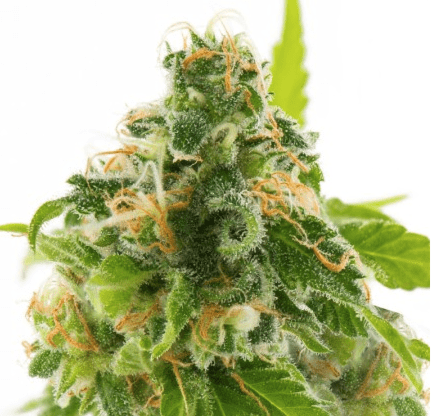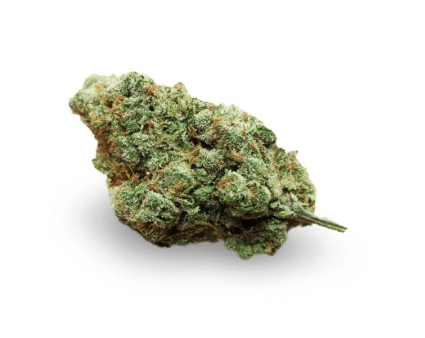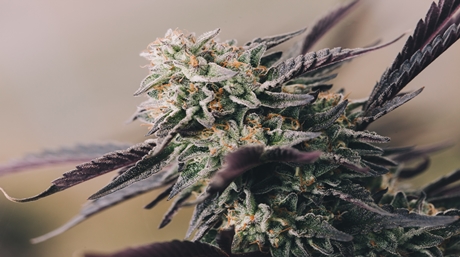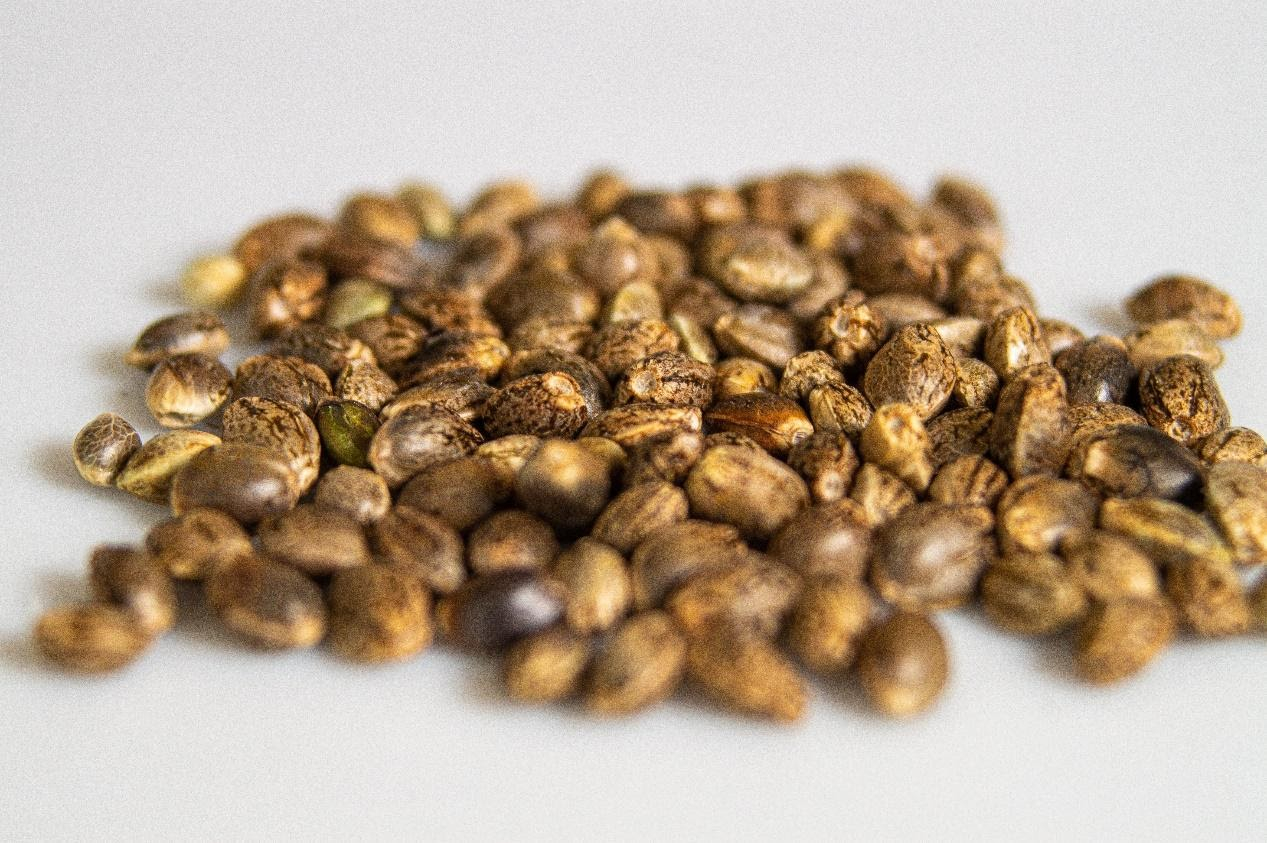Tolerance-testing seeds from the team of master growers.
ILGM, the home for cannabis growers of all stripes, has been having a banner year. They’ve rebranded, revealed a fresh new look, and launched a bevy of new features designed to make it faster and easier for cannabis home growers to connect to quality seeds and cultivation knowledge. Not only does ILGM feature dozens of strain options with reputable, reliable genetics, they’ll ensure you have the resources to make your grow a success with an iron-clad germination guarantee and the option for a one-on-one online consultation with a master grower.
We have a selection of six of ILGM’s most potent and popular high-THC feminized strains, all available to order right from their website and delivered to your front door. Any one of these all-stars is well worth your time and growing energy, so make sure to snag your favorite, or order the whole set and make your grow the chillest place in town.
Granddaddy Purple strain
Purple Urkle x Big Bud | Indica | 25% THC | 77 day flowering time

A favorite of growers just starting on their cultivation journey, Granddaddy Purple teaches the ways of cannabis growing with a steady certainty reminiscent of learning to fish from your elderly relatives. Granddaddy Purple is a high-yield, indica-like strain that has potential to produce up to 510 grams of gorgeous purple buds per meter of growing space.
This strain is an excellent candidate for both indoor and outdoor grows thanks to its robust nature and resistance to disease, but make sure to keep an eye on both the humidity and temperature of your growing area when cultivating Granddaddy Purple—like any gentleman of a certain age, this strain loves to complain about the weather.
Although the parentage of Grandaddy Purple is somewhat disputed, ILGM’s rendition of the strain is a cross between Purple Urkle and Big Bud, two potent indica-likes that passed their powerful genetics onto their progeny. This crossbreed resulted in a virtually pure indica, ideal for end of the night relaxation when the only thing left to do is de-stress.
The strain can produce buds with up to 25% THC, making Granddaddy Purple an excellent choice for those turning to cannabis to relieve pain or help treat other medical ailments. Order your seeds from ILGM today so you can start relaxing sooner.
Do-si-dos strain
GSC x Face Off OG | Hybrid | 25% THC | 63 day flowering time

Do-di-dos exploded onto the cannabis scene almost a decade ago and has been winning the hearts and minds of growers and critics alike, even earning the coveted Leafly Strain of the Year award back in 2021. Do-si-dos is an indica-leaning hybrid with the potential for incredible potency—buds can reach 30% THC in ideal conditions, and most Do-si-dos plants will test between 24-28%. Do-si-dos can stand up to either indoor or outdoor growing situations, but it prefers climates that average between 70 and 80℉.
Related
ILGM’s Home Grow Tour 2025
Do-si-dos is a knockout strain in more ways than one—not only is its fearsome potency strong enough for the most experienced cannabis consumer, it looks absolutely stunning on the grow as well. Bright, verdant greens, pops of lavender and amber highlights all make Do-si-dos liable to become the belle of your garden. When it comes time to enjoy this wonder strain, you can look forward to a sweet, floral aroma with spicy undernotes.
Consumers of Do-si-dos frequently report that the strain excites creativity, elevates the mind, and induces a pleasantly tingly body high. This strain can seemingly do it all, and the best way to find out for yourself if Do-si-dos lives up to the hype is to order some from ILGM today.
LSD strain
Mazar-I-Sharif x Skunk #1 | Hybrid | 24% THC| 61 day flowering time
This indica-dominant hybrid originated in the Netherlands, where it’s intense, euphoric mental high was likened to the street drug LSD, aka acid, by some folks that had experienced them both. The comparison stuck, and LSD is still one of the premier strains for creatives and dreamers looking to tune in, turn off, and drop out.
LSD is a cross of Mazar I Sharif, an Afghani indica, and super-strain Skunk #1, a power-couple of a pairing that resulted in one of the most potent strains on the ILGM roster, with up to 24% THC. This strain certainly is not for the faint of heart, but those with the tolerance to tango with LSD will find it to be a strain unlike any other.
Related
Meet the new and improved home of the growers, ILGM
LSD is a forgiving strain to grow, with a natural resistance to disease giving it the resilience to grow outdoors in a variety of climates. The plants tend to be short and low maintenance, so indoor growers who may not have much space should take a serious look at LSD as a way to maximize THC production in a limited space. LSD has a “sweet and sour” aroma, with notes of citrus, skunk, and pine, and it tastes just like it smells. Order yours from ILGM and you’ll be blasting off with your favorite psychedelic record before you know it.
Green Crack strain
Skunk #1 x Unknown Indica | Sativa | 20% THC| 63 day flowering time

Sometimes strain names demand longwinded explanations that reveal their origins; not so with Green Crack. World-famous rapper and cannabis aficionado Snoop Dogg gave this strain its evocative moniker due to its energizing, focusing high that can give you the energy to conquer the day and then some. This sativa-like won’t put you to bed, or make it so you can’t focus on your tasks—on the contrary, you may very well find that a bit of Green Crack can sub in for your 2:30 p.m. caffeine break to help you rally and finish your day strong.
Green Crack is a relatively straightforward strain, but beginner growers without much equipment may encounter setbacks. Indoor or outdoor grows can support Green Crack plants, so long as there is a controlled humidity level and ample vertical space for the strain to expand into.
Green Crack can reach heights of around 5’5” with tight packed buds, meaning it is one of the biggest yielders ILGM has available, with up to 795 gr/m² potential yield. That’s enough Green Crack to make you want to throw your coffee maker away for good, and ordering from ILGM is how you start.
OG Kush strain
Chemdawg x Lemon Thai x Hindu Kush | Hybrid | 27% THC | 63 day flowering time

OG Kush is a venerable legacy strain famous in all corners of the weed world for its euphoric and sedative effects, impressive potency, and genetic resilience. Dozens of popular strains have some OG Kush in their lineage, making OG Kush a great strain to grow for those with an interest in cannabis history or those wanting to experiment with breeding their own strains.
The strain is an indica-dominant hybrid with a distinctive aroma comprised of citrus, pine, and diesel notes. OG Kush owes its unique terpene profile to a rockstar genetic line descended from Chemdawg, Lemon Thai, and a Hindu Kush plant brought to the US from Amsterdam.
While rewarding, OG Kush can be a challenge to grow—it likes the heat and humidity and generally can’t handle lower temperatures. ILGM recommends growers who don’t live in a warmer, tropical climate keep the strain indoors lest they risk mildew, pest infestation and even crop failure. In the proper climate, however, OG Kush is a fast growing plant that will produce a respectable yield of lime green buds in as little as 63 days.
OG Kush contains up to 27% THC and can help with appetite-related issues, earning it a reputation for an excellent medical as well as recreational strain. If any of the uses for OG Kush sounds up your alley, order from ILGM now and get growing.
GSC Extreme strain
OG Kush x Durban Poison | Hyrbid | 30% THC| 63 day flowering time

GSC Extreme is ILGM’s high-THC rendition of the classic GSC strain. It looks, smells, and tastes just like the original GSC, but with a super-charged THC percentage that makes it a must-grow for all fans of the original, or high-THC strains in general. GSC Extreme can have up to 30% THC, an earth-shattering amount that may just remind you of your very first time smoking cannabis. This strain is a day ender, inducing deep relaxation in both the mind and the body, helping you relax and put your worries to bed.
GSC Extreme is a 50/50 hybrid descended from OG Kush and Durban Poison, giving the strain a balanced high that is reminiscent of both its famous parents. ILGM recommends GSC Extreme for novice growers due to its low-maintenance nature and robust resistance to infestation, mold, and disease.
For best results, however, make sure you give your plant plenty of room to stretch out both vertically and horizontally. GSC Extreme can be a pretty tall drink of water, but if you give it the room it needs, you’ll be rewarded with delicious, high-potency buds that all your friends will be begging for. Click below to see just how extreme this strain can really be.
These strains are just a sample; ILGM has a huge high-THC strain selection on their website that must be seen to be believed. While you’re there, make sure to check out all the new features that make the new ILGM much more than a seedbank. They have tons of expanded growing content, both articles and videos, and plenty of tools to help your grow go smoothly. In addition to their AI-powered assistant, growers can set up a one-on-one video call with master breeders on the ILGM team to directly troubleshoot problematic plants and share growing knowledge. Head over now and take your grow to the next level with ILGM.
In addition to their website, you can also follow ILGM on Facebook, YouTube, and X/Twitter to keep updated with growing events, giveaways, and new strain drops.
Availability subject to law.
















































